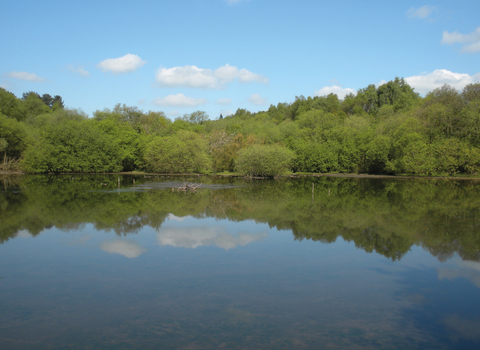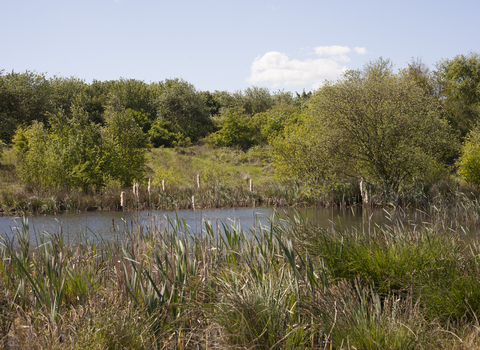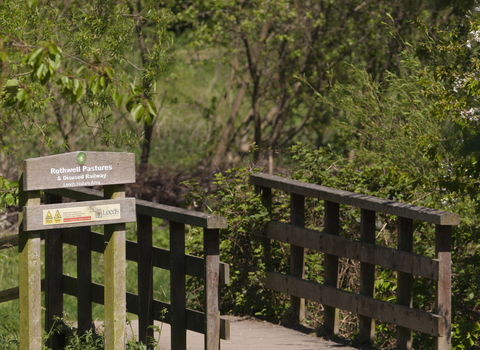Caroline Comins
Grey Heron © Darren Wozencroft 2019
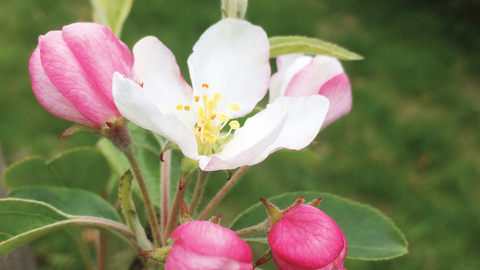
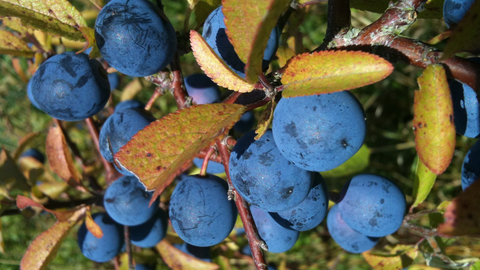
Kirkstall Valley Nature Reserve
Location
Know before you go
Dogs
Please respect the resident wildlife and keep dogs on a short lead.
When to visit
Opening times
Open at all times. We recommend a 1 hour outing to this reserve. For a longer walk combine with the Leeds & Liverpool canal, or a visit to Adel Dam, 5.5 miles away.Best time to visit
May to FebruaryAbout the reserve
Birds, mammals, amphibians, flowers and insects are within touching distance of roads, railways, businesses and housing here on the edge of urban Leeds – but the joy of this reserve is that the city feels much further away.
Kirkstall Valley hasn’t always been the attractive green landscape you see today. Where there’s now a young woodland and wildflower meadow, there was previously a power station and then a landfill site. The variety of wildlife is impressive: over 130 plant species, 65 birds including kingfishers, 16 butterflies including small coppers and commas, and six species of dragonfly have been recorded. Mammals include otters, foxes, and pipistrelle, noctule and Daubenton's bats.
The grassland area is home to a mixture of toads, frogs, voles and common shrews, and buzzards fly overhead. This area was noted for orchards in medieval times and, thanks to recent planting, the fruit trees are back! The orchard is full of fruit in autumn – apples, quince, pear, cherry, plum, greengage and medlar. It’s a lovely spot in the springtime, full of greenery and blossom.
Maintaining the reserve for wildlife is a year-round task. We cut and rake the meadows in late summer and lightly coppice the woodland in winter to create good growing conditions for wildflowers. The coppice habitat is also ideal for fritillary butterflies and birds such as garden warblers and robins. Log piles from cut trees are left on site to support the growth of fungi as they decay.
Contact us
Before you visit
Kirkstall Valley is currently seeing a high level of visitors and an increased amount of litter around the reserve.
We'd urge everyone to follow our 'love and look after it' advice - take all your litter home, do not have barbecues or campfires and respect the nature and wildlife at the reserve. If you do see any anti-social behaviour, please contact the police on their non-emergency number 101.
Please keep your dog on a lead (more information below) and be especially aware of keeping to the paths and following signage around the reserve.
About
Situated on the site of former Kirkstall Power Station and owned by Leeds City Council, Kirkstall Valley Nature Reserve is a fantastic example of nature restoration. The reserve now supports large areas of wildflower meadow and young woodland. Formed on a plateau of fly ash deposits and later landfill, the site was capped and seeded with native wildflower species in the 1990s, while shrubs and trees were planted around the edges. The area was noted for orchards in medieval times, Kirkstall now supports a good number of fruit trees including medlar, quince and five apple varieties, with recent additions of cherry, greengage, damson, pear and plum.
A variety of habitats have emerged; meadows sustain a myriad of insect life including the small copper butterfly, young woodland is rich with fruit bearing shrubs attracting feeding birds, ponds and ditches ensure robust populations of toads, frogs and newts.
Over 130 plant species have been recorded on site along with 65 species of birds including kingfisher and a number of mammals such as fox, as well as pipistrelle, noctule and Daubenton's bats. Otters may be seen by the old ford, which is generally impassable for most of the year.
Sixteen butterfly species have been recorded including comma and small copper and also six species of dragonfly.
Yorkshire Wildlife Trust manages the meadows through cutting and raking in late summer. The woodland is coppiced and thinned on rotation in the winter.
There is a bar at the City Golf club house and toilets used with their permission.
Seasonal highlights
- Spring: Plants - Primrose; Apple tree blossom; Cowslip
- Summer: Plants -Ox-eye daisy; Meadow vetchling; Invertebrates - Small copper; Amphibian - Common toad
- Autumn: Plants - Sloe; Apple; Pear; Quince; Medlar
- Winter: Birds - Goosander; Grey heron; Kingfisher; Bullfinch; Reed bunting
Directions
Public transport
There are regular buses along Kirkstall Road from Leeds City Centre with a bus stop at the end of Redcote Lane. Burley Park Railway Station is about 1.5 miles away or a 30 minute walk.
By car
The entrance to the nature reserve is towards the end of Redcote Lane (just off Kirkstall Road), past Fitness First and City Golf and just before the railway bridge on the right. There is parking here on the road near the entrance. Please do not block the gateway. It is about two miles from the centre of Leeds.
Thank you!
Your donations and membership mean we can restore and maintain wild places and create homes for wildlife in post-industrial settings like Kirkstall Valley.
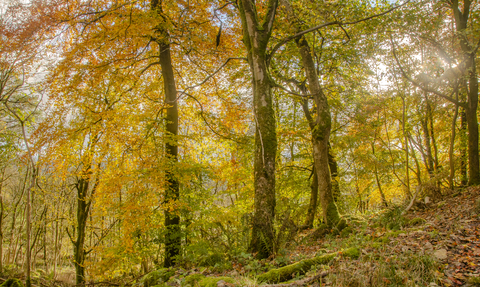
The autumn colours were even more beautiful when the sun came out
Photo Credit - Telling our Story Volunteer, Sara

